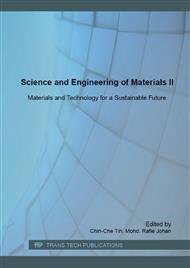p.255
p.260
p.265
p.270
p.275
p.281
p.286
p.291
p.295
Mathematical Modeling of Thickness Dependent Physical Aging in Polymeric Membranes
Abstract:
The drawback of membrane process that reduces its competitive edge with the conventional separation technologies is ascribed to its decline separative performance over time due to the aging nature of polymeric material. The most widely accepted mechanism that has been thought of governing the volume relaxation process over the course of aging is the dual mode mechanism, whereby it is comprised of two components. The first is the “Lattice contraction” mechanism that describes the uniform collapse of free volume throughout the unrelaxed polymer matrix. The second is the “Diffusion of free volume” mechanism from the interior to the surface of the glassy polymer. Albeit acknowledgement of the dual mode mechanism as the contributing factor, previous aging model renders high implementation challenges to characterize the complicated nature of aging evolution, which requires adaptation of high end computational tools to solve the relatively complex differential equations. In this work, the dual mode mechanism governing the physical aging process has been modelled employing a simple one dimensional finite element numerical solution whereby the film has been divided into many finite slices with equal thickness along the depth of the membrane. The applicability of the mathematical model has been validated with experimental aging data, whereby a small deviation is observed between the two over a wide range of film thicknesses and reasonable intuitive explanation pertaining to the parameters is obtained.
Info:
Periodical:
Pages:
275-280
Citation:
Online since:
July 2016
Price:
Сopyright:
© 2016 Trans Tech Publications Ltd. All Rights Reserved
Share:
Citation:



